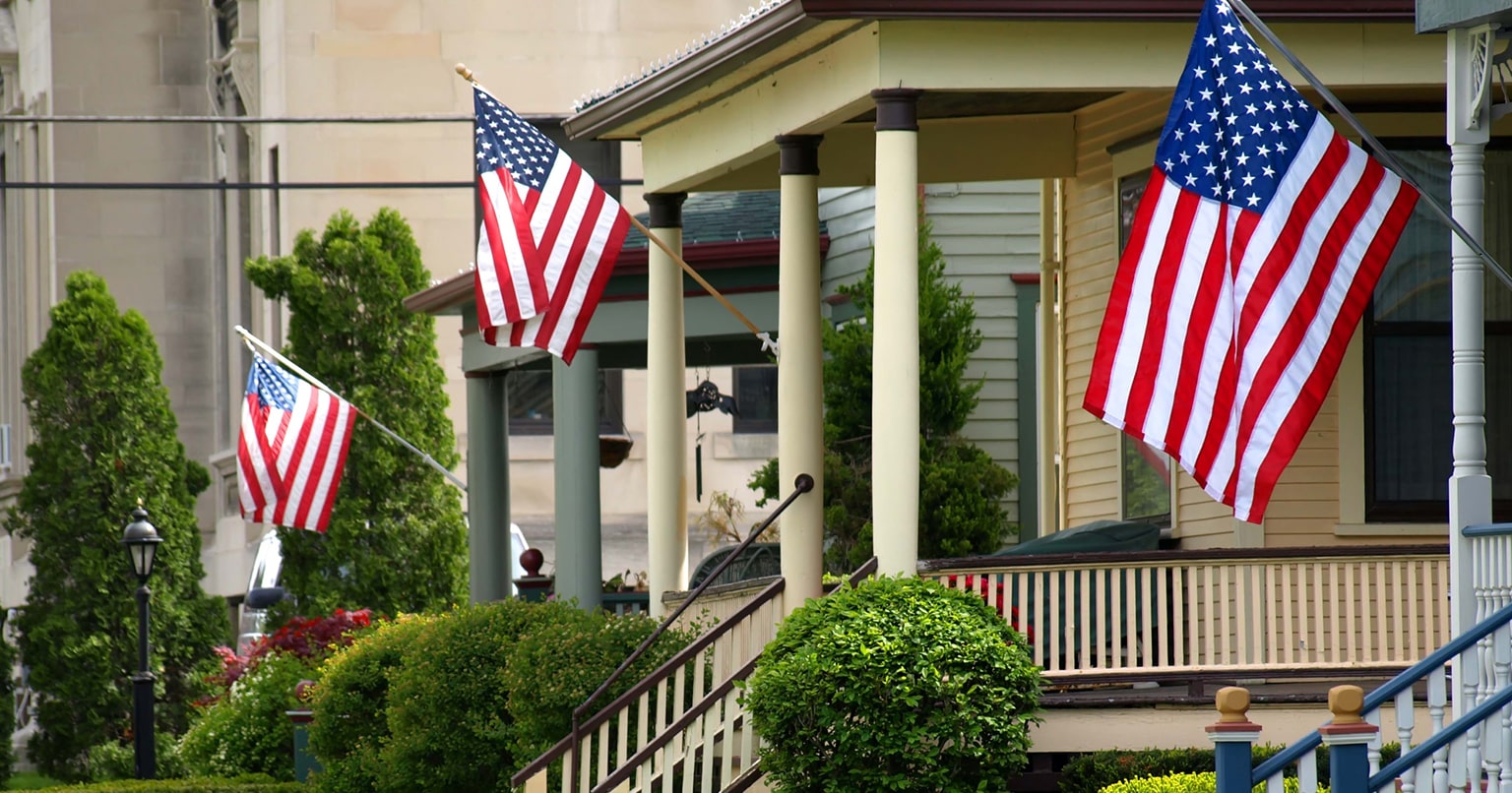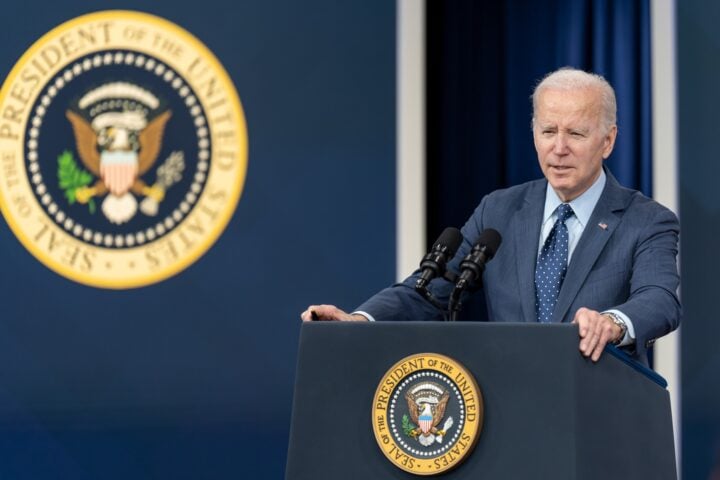American home with the country's flag
Many people living outside the United States think it is one homogeneous country. The founder of an Australian company told me they plan to enter the U.S. because it is one huge market that speaks one language and has one set of rules. Compared with Europe’s 44 countries, that assumption is correct: the U.S. is easier to navigate. However, it is a mistake to underestimate the complexity and diversity in our country.
Anyone who has traveled within the U.S. knows that each region is unique. And within each region, there are huge differences between states, counties, cities, and neighborhoods. In each community, people have varying beliefs, behaviors, and lifestyles. Even the pace and use of language shift depending on the location. Californians think, talk, and behave very differently than Texans, who are very different than Virginians and Wisconsinites. And New Yorkers, well, “Fuhgeddaboudit”! They are so unlike anyone else in the country.
The land and climates of the United States also fluctuate greatly across its more than 3.8 million square miles (6 million square meters) of land. In fact, the U.S. Department of Commerce recognizes five different climate zones, ranging from tropical to dry, and the physical landscapes within these U.S. regions vary from flat plains to tall mountains, lush forests to barren dirt fields. Water and other natural resources range in availability from abundant to skimpy depending on the location.
Each of our 50 states has its own set of laws and regulations. Taxes vary from state to state, county to county, and city to city. California’s state sales tax is 7.25%, but with sales taxes added in each county and city, residents pay over 10% taxes on goods purchased. (SOURCE: French-American Chamber of Commerce, 2021) New Hampshire and four other states have no state or local sales taxes. Moreover, regulations on employment practices and other business activities differ by state, county, and municipality.
Advertisement
Why So Much Difference Across Regions?
From the beginning, the United States has never been truly united. It was cobbled together in 1776 from thirteen colonies that were practically separate nations. Each North American colony was founded by immigrants from distinct regions of the British Isles, France, the Netherlands and Spain — each with its own religious, political and ethnographic traits. They saw themselves as competitors for land, capital, and new settlers; some colonists viewed the others as enemies.
The original colonies united to form one nation only to revolt when the British monarchy levied exorbitant taxes, restricted trade with France and Spain, and tried to stop land speculators—including George Washington, Benjamin Franklin, and Thomas Jefferson — from claiming new territories from Native Americans.
American Nations, by Colin Woodard, tells the history of the eleven rival regional cultures of North America. Each culture was formed by a distinct group of mostly European immigrants, each with its own beliefs, values, behaviors, and dialects. Woodard describes how these groups stayed mostly apart from each other for several generations. Then, over the past 100 years, they migrated and integrated into other regions. Nonetheless, these regional differences still exist in the U.S., and Woodard assigns each region a name that reflects its origins.
Advertisement
Yankeedom was founded by Puritans and Pilgrims seeking religious freedom. This culture, which spread from New England to the upper Midwest and New York, values education, intellectual achievement, communal empowerment, and active participation in politics and government. Though religious zeal has waned, the Yankee commitment to these principles remains strong.
New Netherland, centered around New York City, was established by Dutch traders. Known for its sophisticated and tolerant society, this region has a commercial culture that values materialism, ethnic and religious diversity, and freedom of inquiry and conscience. These traits have only strengthened over time.
The Midlands, founded by English Quakers, stretch from New Jersey, Pennsylvania, Delaware, and Maryland across the middle of the country. This culture, marked by a belief in equality, honest dialogue, and community, remains pluralistic and middle-class-oriented.
Tidewater was established by younger sons of English gentry around Chesapeake Bay. This region, which expanded into Virginia, Maryland, Delaware, and North Carolina, initially tried to replicate the semi-feudal society of England, complete with indentured servants and slaves. Today, Tidewater’s conservative culture values authority and tradition. Settlers from Ireland, northern England, and Scotland founded Greater Appalachia, bringing with them a warrior ethic and a fierce commitment to personal liberty. This culture, spanning parts of Ohio, Indiana, Illinois, Arkansas, and Oklahoma, remains proud, independent, and somewhat volatile.
The Deep South was founded by English slave lords from Barbados who sought to recreate a West Indies-style slave society. This region, encompassing Georgia, Mississippi, Florida, and parts of Texas, has a history of white supremacy and concentrated wealth. Although it has evolved, the Deep South still fights against federal regulations and taxes on its wealthy citizens.
Advertisement
New France, with roots in French fur traders, encompasses Québec and New Orleans. Known for its multicultural, egalitarian, and consensus-driven culture, New France values diversity and negotiated consensus.
The Far West, defined by its rugged environment, includes parts of California, Oregon, Washington, Idaho, and Montana. Settled by people drawn to mines, railroads, and ranches, this region values hard work, family, and independence.
The Left Coast, from Monterey, California to Juneau, Alaska, includes progressive cities like San Francisco, Portland, Seattle, and Vancouver. A blend of Yankee idealism and Greater Appalachian independence, this region often clashes with Far Westerners.
El Norte, the first regional culture, was established by Spanish soldiers and missionaries along the U.S.-Mexico border. Known for its Hispanic language and culture, El Norte values independence, hard work, and adaptability.
Advertisement
Understanding the United States as a mosaic of diverse cultures and regions is crucial for any business or entrepreneur looking to enter and expand in America. Recognizing these complexities helps in appreciating the unique characteristics that define the U.S., making it clear that it is far from a homogenous entity. USAccelerator helps understand market characteristics and cultural differences in the United States today using AI-powered market mapping tools.
NOTE: This article was excerpted from Matthew Sawyer’s book: Make It In America – How International Companies and Entrepreneurs Can Successfully Enter and Scale in U.S. Markets, published by Wiley in 2022
Advertisement
Views expressed by contributors are strictly personal and not of TheCable.
Add a comment










